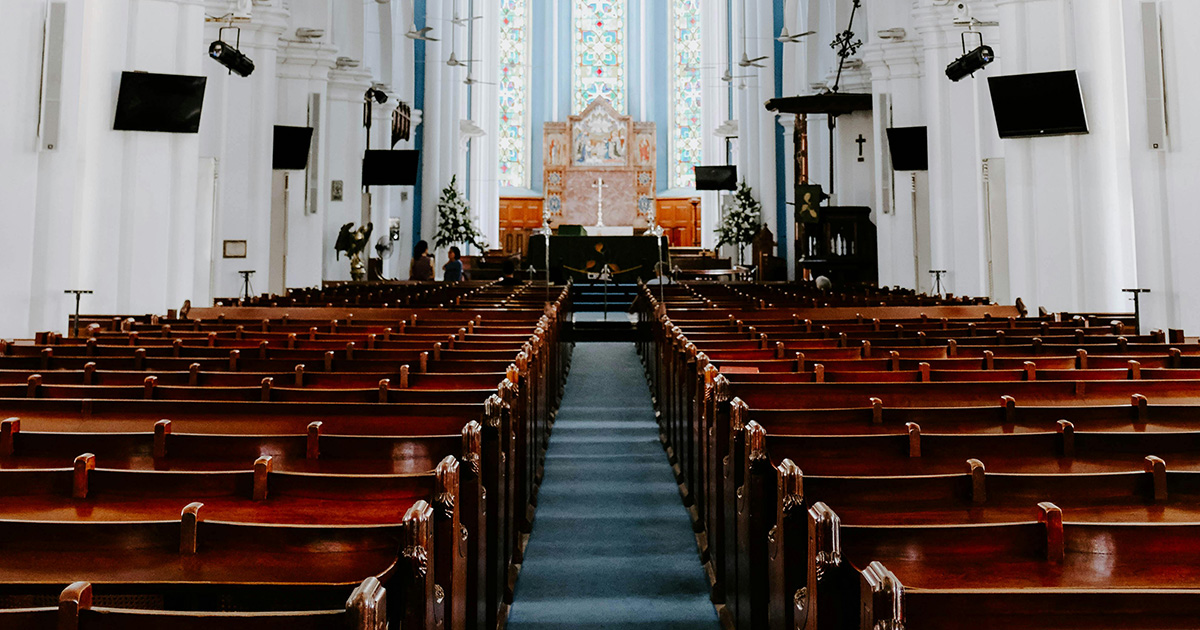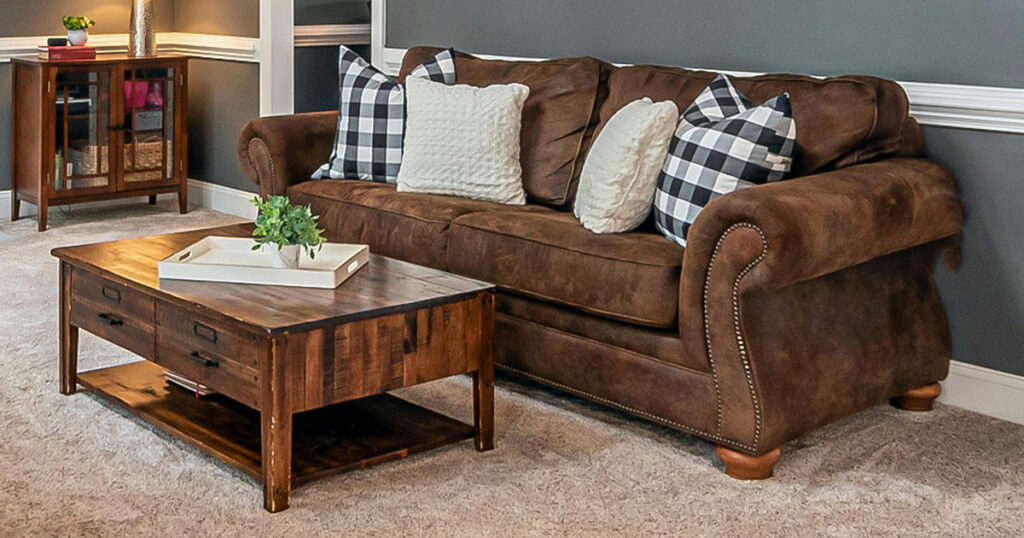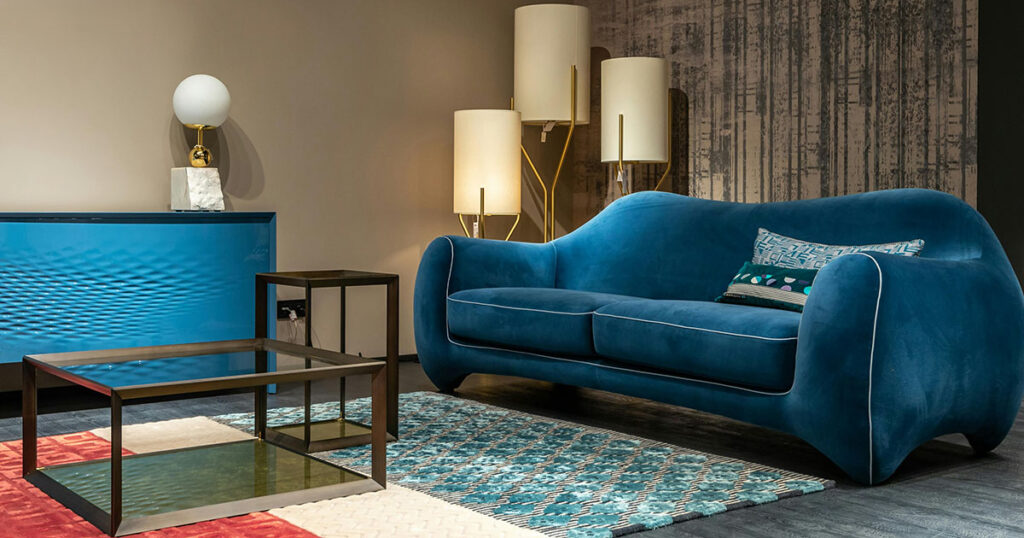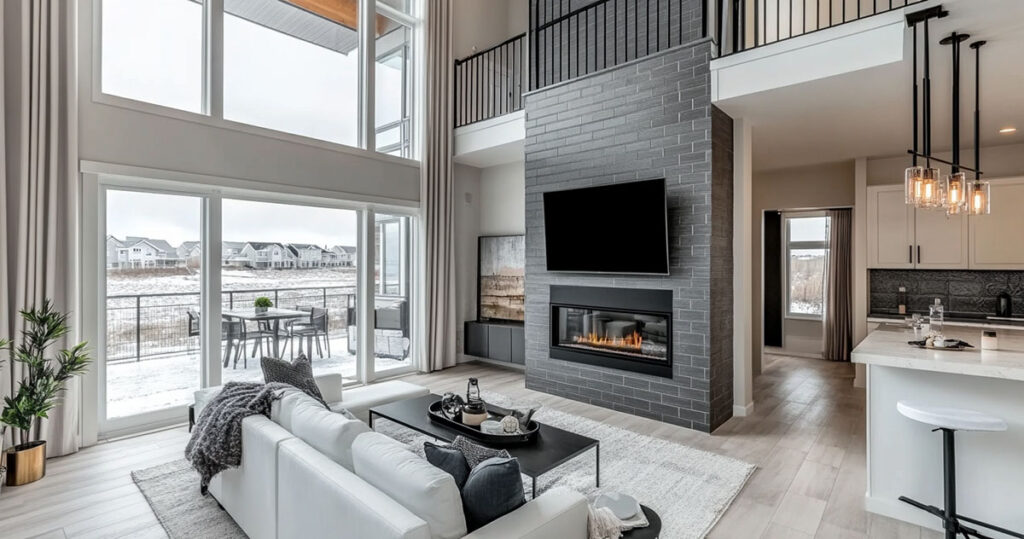Selecting the right tufted rugs for your church involves balancing aesthetics, durability, and functionality.
This comprehensive guide will help you understand the benefits of tufted rugs, how they compare to alternatives, and how to choose the perfect option for your specific worship space.
Understanding Tufted Rugs for Churches
What Are Tufted Rugs?
Tufted rugs are made by punching yarn through a base fabric and securing it with an adhesive backing. This creates a pile surface that gives tufted carpets their textured, plush feel. The process allows for varied patterns, colors, and pile heights.
The construction typically includes:
- A primary backing fabric where yarn is punched through
- Yarn loops that can be cut or left as loops
- An adhesive layer (commonly latex) that secures the yarn
- A secondary backing (like cotton, jute, or polypropylene) for stability
Why Tufted Rugs Work Well in Churches
Tufted rugs offer several advantages that make them ideal for worship spaces:
- Durability for high-traffic areas
- Sound absorption that improves acoustics
- Warmth and comfort underfoot
- Design versatility to match architectural styles
- Insulation against cold stone or tile floors
Tufted rugs are widely used in churches because they strike a balance between cost-effectiveness and quality.
They create a cushioned, warm feel that’s welcoming to congregants while standing up to years of use.
Choosing the Right Tufted Rug for Different Church Types
Traditional Churches and Historic Spaces
Traditional churches with rich architectural details and formal atmospheres benefit from tufted rugs that complement their heritage.
For these spaces, consider:
Materials: High-quality wool blends or dense nylon pile provides the luxurious feel appropriate for sacred spaces.
Colors: Deep, rich tones like burgundy, royal blue, or purple carry liturgical significance while adding warmth. These traditional hues symbolize royalty, penitence, and solemnity.
Patterns: Subtle ecclesiastical motifs like small crosses, fleurs-de-lis, or scrollwork tufted into the carpet maintain the traditional character without overwhelming the space.
Placement: A plush tufted carpet on the altar steps or in the sanctuary creates a focal point and sense of reverence. Center aisle runners in contrasting colors draw the eye toward the altar.
For historic churches with stone floors, consider a classic wool tufted rug with rich colors that complement stained glass windows and wooden pews.
Modern and Contemporary Churches
Churches with modern architecture or a casual worship style often prefer a different approach to flooring.
For contemporary spaces, consider:
Materials: Commercial-grade nylon tufted carpets offer durability with a clean look.
Colors: Neutral tones like gray, charcoal, or navy provide a backdrop that doesn’t compete with modern lighting and stage design.
Patterns: Simpler patterns or solid colors align with clean architectural lines. Modern churches often prefer carpet designs that feel fresh and vibrant while still respecting the solemnity of worship.
Placement: Full floor coverage with tufted broadloom carpet or carpet tiles creates a cohesive look while providing acoustic benefits for amplified services.
A modern church might choose a low-pile tufted carpet in a subtle geometric pattern that complements concrete or steel elements in the building.
Small Chapels and Intimate Spaces
Smaller worship spaces have unique requirements where scale and budget are important considerations.
For chapels and intimate spaces, consider:
Materials: A high-quality tufted wool rug can add a sense of permanence and quality even in a small space.
Colors: Choose colors that don’t overwhelm the room—subtle patterns or solid colors work best so the rug doesn’t dominate the small sanctuary.
Scale: In a small chapel, a single area rug (perhaps in the center aisle or under the altar) can make a significant impact.
Budget: While smaller spaces require less material, quality remains important. A well-made tufted rug placed strategically can last for years.
A small chapel might use a tufted wool rug with a simple border design in the central aisle, creating a path that leads to the altar while adding warmth to the space.
Large Churches and Cathedrals
Large sanctuaries see heavy foot traffic and present unique challenges when selecting floor coverings.
For large worship spaces, consider:
Durability: Heavy-duty tufted carpets with dense, short pile can withstand decades of use from large congregations.
Traffic patterns: Focus on high-quality tufted rugs in high-traffic areas like entrances and central aisles.
Sectional approach: Rather than carpeting the entire space, use tufted rugs strategically—perhaps as runners in aisles while leaving stone or wood floors exposed elsewhere.
Acoustics: Balance sound absorption with the need for some reverberation, especially in music-oriented spaces.
Large churches might choose a heavy-duty tufted carpet with a “heavy commercial” wear rating for main traffic areas, with special attention to entrance areas and central pathways.
Practical Considerations
Acoustic Management
Carpeting significantly impacts church acoustics, which can make or break the worship experience.
Tufted rugs absorb sound, which helps:
- Reduce echoes and improve speech clarity
- Quiet footsteps and other distracting noises
- Create a more comfortable sound environment for spoken word
However, too much carpet coverage can dampen the resonance needed for music, particularly in churches with choirs or pipe organs. The floor provides a major portion of sound reflection, and if fully carpeted, it can absorb too much sound energy.
For balanced acoustics, consider:
- Using tufted rugs strategically in areas where noise control matters most
- Leaving some hard flooring exposed, especially in music-focused spaces
- Choosing thinner tufted rugs if maintaining some resonance is important
A thoughtful approach might include carpeting the aisles and pulpit area with tufted rugs while leaving areas under pews uncarpeted to preserve some acoustic liveliness.
Durability and Traffic Management
Churches experience varied foot traffic patterns—from weekly services to holiday crowds to events. Flooring must withstand this usage.
For high-traffic areas:
Choose dense, low-pile tufted carpets with high durability ratings.
Commercial-grade tufted carpet with tight loops or cut pile can handle years of foot traffic in entrances, central aisles, and areas between pews.
Consider color and pattern to hide dirt and stains. A tufted rug with a multi-tonal pattern can make tracked-in dirt less visible between cleanings.
Use walk-off mats at entrances to protect the main sanctuary carpet from dirt and moisture.
Address uneven wear by selecting modular carpet tiles for areas with the heaviest traffic, allowing for replacement of worn sections.
For a church entrance, a durable tufted nylon carpet in a forgiving pattern will maintain its appearance despite constant foot traffic.
Maintenance Requirements
Maintaining tufted rugs properly extends their life and preserves their appearance.
For effective maintenance:
Regular vacuuming is crucial, especially in high-traffic areas, to remove dirt that can abrade fibers. Plan for vacuuming after every major service.
Prompt spot cleaning for spills helps prevent staining. Most tufted carpets can be treated with appropriate cleaners for minor spills.
Professional cleaning will eventually be needed. Be cautious with tufted rugs during deep cleaning—excessive moisture can potentially weaken the latex glue holding the carpet together.
Material considerations affect cleaning. Nylon fibers (common in commercial tufted carpets) are durable and stain-resistant. Wool fibers (in high-end tufted rugs) are naturally soil-resistant but require gentler cleaning.
A church maintenance plan should include weekly vacuuming and professional cleaning every 12-18 months to preserve the tufted rug’s appearance and extend its lifespan.
Yarn Options for Church Tufted Rugs
Fiber Choices and Their Properties
The face fiber of tufted rugs greatly impacts performance, appearance, and longevity.
Wool: This traditional choice for high-quality church tufted rugs offers excellent resilience, natural flame resistance, and rich color. Wool tufted carpets at the altar can look luxurious and last for years. While expensive, wool wears gracefully and maintains its beauty with age.
Nylon: A workhorse fiber for commercial tufted carpets, nylon offers high tensile strength, excellent wear resistance, and good resilience. Many tufted broadloom carpets for high-traffic church areas use nylon for its durability and stain resistance. Solution-dyed nylon (where color is integrated during manufacturing) offers superior fade resistance.
Polypropylene (Olefin): Used in budget carpets, polypropylene is highly stain-resistant to water-based spills and typically less expensive. However, it’s less resilient and can mat down under heavy traffic. It might work in low-traffic areas or temporary situations but isn’t ideal for main sanctuary spaces.
Polyester: Provides vibrant colors and inherent stain resistance. While not as resilient as nylon for high-traffic areas, newer polyesters have improved durability. This could be suitable for moderate-use areas in churches where budget is a concern.
For a church sanctuary with regular services, a tufted wool-nylon blend combines the best qualities of both fibers—the warmth and appearance of wool with the durability of nylon.
Installation and Safety Considerations
Professional Installation Requirements
Proper installation ensures your tufted church rugs will look beautiful and last longer.
For wall-to-wall tufted carpet or large fitted carpets, professional installation is highly recommended. Professionals will ensure:
- Seams are placed inconspicuously and secured properly
- The carpet is stretched tight or glued down correctly
- Transitions to other flooring are finished with appropriate trim
- The installation complies with safety standards
For loose-laid tufted area rugs, take steps to keep them in place:
- Use non-slip rug pads that grip hard floors
- Consider carpet tape or Velcro strips to anchor corners
- Regularly inspect for movement or buckling
Proper installation includes securing all edges—at door thresholds, a transition strip should hold the carpet edge to prevent fraying or lifting.
Safety and Accessibility Standards
Churches, as public gathering places, must prioritize safety and accessibility in flooring choices.
Key safety considerations include:
Eliminate trip hazards. ADA standards require carpets to be securely attached without shifting or buckling. Exposed edges must have trim and be fastened to prevent curling.
Mind pile thickness at transitions. ADA guidelines state carpet pile height should be no more than 1/2 inch in accessible areas. If there’s an abrupt change in level over 1/4 inch, it should be beveled.
Ensure visual contrast at step edges. If carpeting stairs, use contrasting color binding or nosing so people can clearly see where one step ends and the next begins.
Choose firm carpeting. ADA requires carpets to be firm enough that wheelchairs don’t sink and those using canes have stability. Dense, low-pile tufted carpets with firm padding meet this requirement.
A church entrance with tufted carpet should have secure edges with proper transition strips, ensuring both beauty and safety for all congregants.
Conclusion
Selecting tufted rugs for your church is a significant decision that impacts aesthetics, acoustics, comfort, and budget.
By understanding the unique needs of your worship space—whether traditional or modern, intimate or grand—you can choose tufted rugs that enhance the worship experience while providing lasting value.
Consider how different areas of your church serve various functions and may require different approaches to flooring.
The sanctuary, altar, aisles, and entrances each have specific requirements best met by thoughtfully selected tufted rugs.




